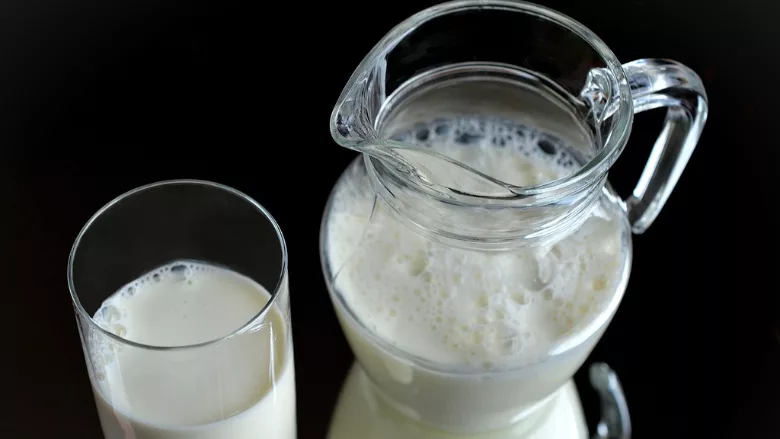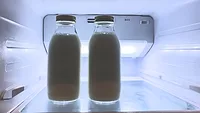FDA Testing Finds HPAI in Retail Milk Samples; Research Required to Determine Infectivity, Food Safety Risk

Image credit: congerdesign via Pixabay
On April 25, 2024, during a U.S. Association of State and Territorial Health Officials (ASTHO) virtual scientific symposium discussing the ongoing national outbreak of Highly Pathogenic Avian Influenza (HPAI) H5N1—also known as “bird flu”—Donald Prater, D.V.M., Acting Director of the U.S. Food and Drug Administration’s Center for Food Safety and Applied Nutrition (FDA’s CFSAN), revealed that one in five samples collected in a national survey of retail milk has tested positive for HPAI H5N1 genetic material. The samples with the highest concentrations of HPAI H5N1 particles were sourced from regions of the U.S. where cases of the virus have been confirmed in dairy cattle.
Additional testing is required to determine whether intact HPAI H5N1 is present in retail milk and if it remains infectious, which would reveal whether there is any risk of illness associated with consuming product containing virus particles, according to Dr. Prater.
Still, FDA maintains its position that the U.S. milk supply is safe, as nearly 99 percent of the commercial milk supply in the U.S. is produced on dairy farms that participate in the Grade “A” milk program and follow the Pasteurized Milk Ordinance (PMO). PMO ensures that dairy producers implement controls that increase the safety of their products, such as the inactivation of microbial contaminants through pasteurization and the diversion or destruction of milk from infected cows.
(Note: FDA recently announced additional, preliminary results from sampling and testing activities that further support the safety of the U.S. milk supply by showing the efficacy of pasteurization against HPAI. More information can be found in an update at the end of the article).
Background
On April 1, 2024, CDC confirmed that a person in Texas tested positive for HPAI H5N1 after being exposed to infected dairy cattle—the second confirmed case of the virus in the U.S., following a previous human case that occurred in 2022 in Colorado. CDC has been monitoring for human cases of HPAI H5N1 since late 2021, when outbreaks first began to sweep through U.S. wild bird and poultry populations. The first related instance of HPAI confirmed in U.S. commercial poultry occurred in March 2022. Bird flu has also been affecting wild bird and poultry populations across the globe. HPAI in dairy cows was first reported in Texas and Kansas by USDA on March 25, 2024.
USDA also issued a federal order, effective April 29, 2024, which requires mandatory testing of dairy cattle at an approved National Animal Health Laboratory Network (NAHLN) laboratory prior to the interstate movement of the cows. The federal order also requires mandatory reporting for laboratories and state veterinarians.
Research Needs and Ongoing Work by FDA and USDA
Looking for quick answers on food safety topics?
Try Ask FSM, our new smart AI search tool.
Ask FSM →
Dr. Prater acknowledged key scientific data gaps that exist regarding HPAI and bovine milk, including, but not limited to: the risk of HPAI infectivity to humans via consumption of dairy products, if live HPAI H5N1 can survive pasteurization, and if different methods of pasteurization and dairy production have differing effects on HPAI viability. He identified scientific studies that are required to better understand the food safety risk of dairy products in light of the ongoing HPAI outbreak and to fill knowledge gaps, such as validation studies of pasteurization in spiked samples simulating real-world viral levels in dairy products leaving farms, assessments of whether live virus is present in retail milk, research on routes of infectivity of H5N1 in mammals, and other studies.
FDA and the U.S. Department of Agriculture (USDA) are collaborating on a number of studies to better understand what HPAI H5N1 means for dairy food safety, which Dr. Prater outlined: benchtop pasteurization studies using spiked milk and milk from affected cows, pasteurization validation studies using pilot-scale continuous flow pasteurizers with spiked milk simulating real-world levels of virus, a study to determine viral load in raw milk presented to processors in affected states, and a survey of HPAI in retail food samples by quantitative polymerase chain reaction (qPCR) and viral isolation via eggs. qPCR is a screening tool to determine the presence or absence of genetic material in a sample, but it cannot identify whether genetic material present in a sample belongs to an intact, infectious pathogen. Embryonated egg viability studies are the “gold standard” for the sensitive detection of active, infectious virus, but they take a longer time to complete than other methods.
Scientific work to better understand the food safety and public health implications of HPAI H5N1 is also underway at other federal agencies, such as the U.S. National Institutes for Health (NIH) and the U.S. Centers for Disease Control and Prevention (CDC), as well as at academic institutions.
Update, April 29, 2024: In a constituent update, FDA announced additional results from an initial limited set of geographically targeted samples as part of its national commercial milk sampling study underway in coordination with USDA. FDA will continue to analyze this information; however, preliminary results of egg inoculation tests on quantitative qPCR-positive retail milk samples show that pasteurization is effective in inactivating HPAI.
Several samples of retail powdered infant formula were also tested, as well as powdered milk products marketed as toddler formula. All qPCR results of formula testing were negative, indicating no detection of viral fragments or virus in powdered formula products.
FDA is further assessing retail samples from its study of 297 samples of retail dairy products from 38 states. All samples with a PCR-positive result are going through egg inoculation tests.
Update, May 1, 2024: FDA announced an additional set of results from its national commercial milk sampling study, which is ongoing in coordination with USDA. The study includes 297 total retail dairy samples. New preliminary results of egg inoculation tests on a second set of 201 qPCR-positive retail dairy samples, including cottage cheese and sour cream, in addition to fluid milk, show that pasteurization is effective in inactivating HPAI. This additional preliminary testing did not detect any live, infectious virus, and reaffirms FDA's assessment that the commercial milk supply is safe.
FDA also tested samples of retail powdered infant formula and powdered milk products marketed as toddler formula. All qPCR results of formula testing were negative, indicating no detection of HPAI viral fragments or virus in powdered formula products so no further testing was required for these samples. FDA is continuing to identify additional products that may be tested.
The agency is also continuing to test samples of pooled raw milk that has been routed to pasteurization and processing for commercial use. This will be used as a basis to characterize potential virus levels that pasteurization may encounter, and will be used to inform studies to further validate pasteurization.
As the situation evolves, FDA will continue to consider all ongoing scientific research related to the effectiveness of pasteurization for HPAI in bovine milk.
Update, May 20, 2024: FDA reaffirmed that all 297 samples from the agency's initial survey of retail dairy products were found to be negative for viable HPAI H5N1, and has provided additional information and results on the retail sample survey.
The samples taken as part of the survey were collected at retail locations in 17 states, representing products produced at 132 processing locations across 38 states. The study assessed a variety of products, and samples were selected to be representative of processors in both states that have and have not been reported to have impacted dairy cattle.
All samples were analyzed via qRT-P. Because qRT-PCR-positive results do not necessarily represent live virus that may be a risk to consumers, viability testing by egg inoculation was performed on the qPCR samples that were positive for viral nucleic acid. No viable virus was detected in any of the samples subjected to further testing.









